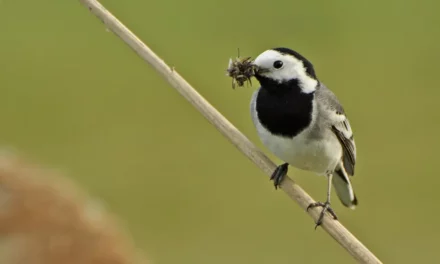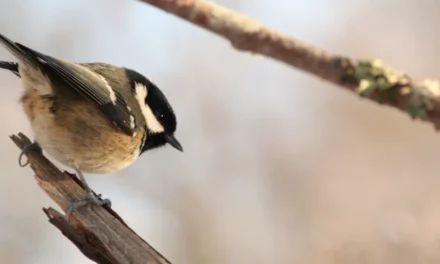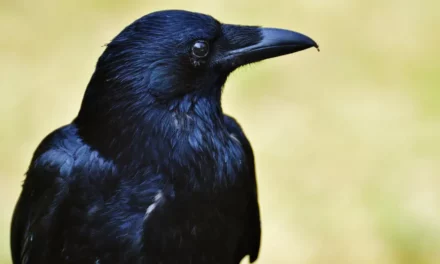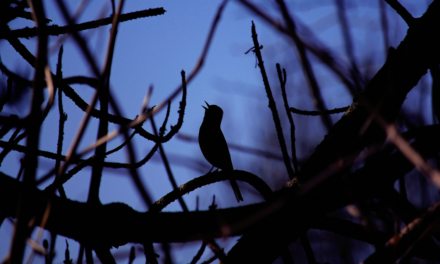Distinctive appearance of the Eurasian Blue Tit
The Eurasian Blue Tit is instantly recognizable due to its striking yellow and blue colors. This small bird boasts a vibrant blue cap and a clean white face, adorned with a black eye band and a black collar. The belly is yellow, with a white central area featuring a bluish to black spot, which can sometimes extend as a line. Its wings and tail showcase blue and gray hues, adding to its colorful appearance. While males are more vivid, females and young birds have slightly duller tones.
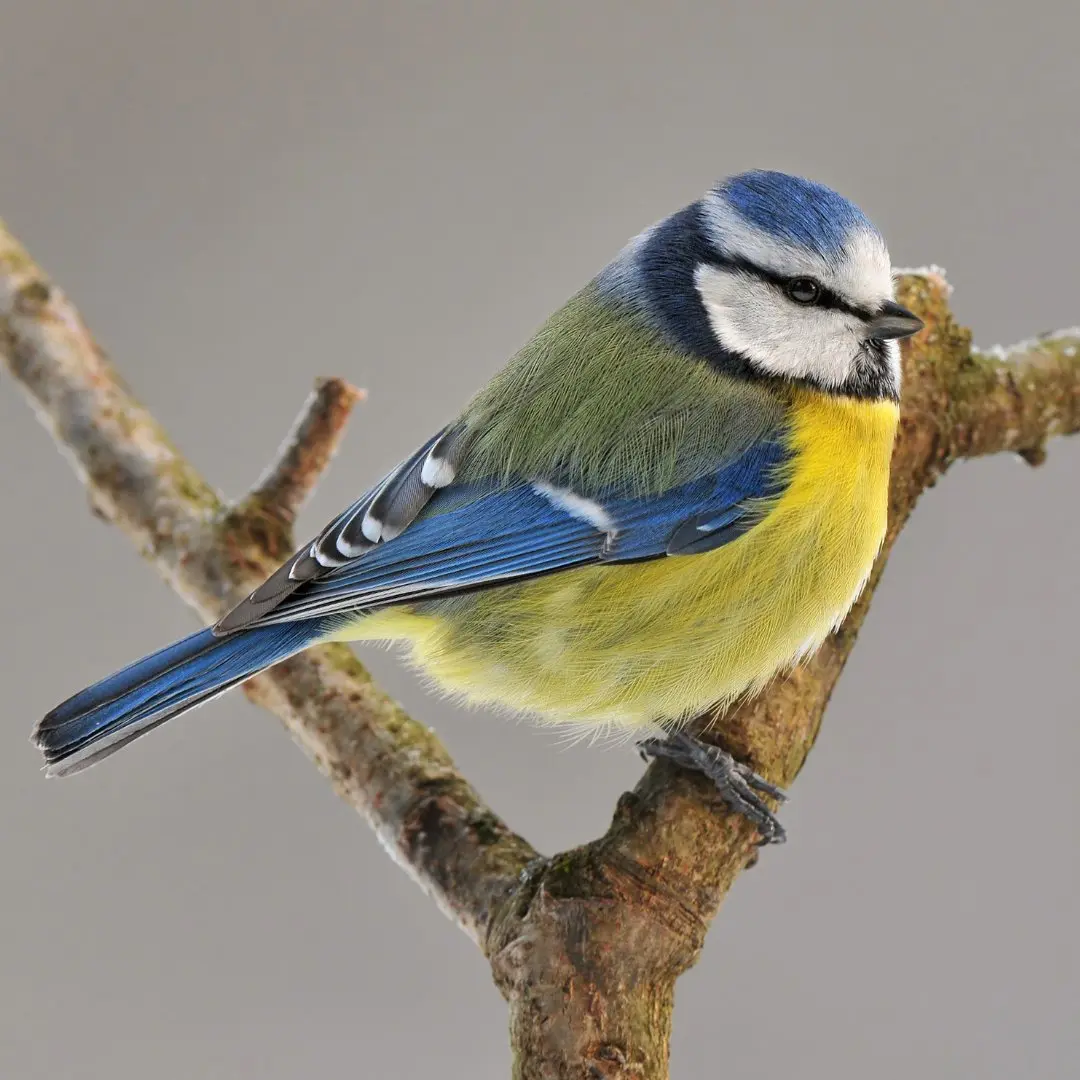
Acrobatic behavior and foraging style
The Eurasian Blue Tit is known for its acrobatic feeding habits. It often hangs upside down from branches, especially at the ends, in search of insects and food. This behavior is not only a means of foraging but also a display of its agile nature.
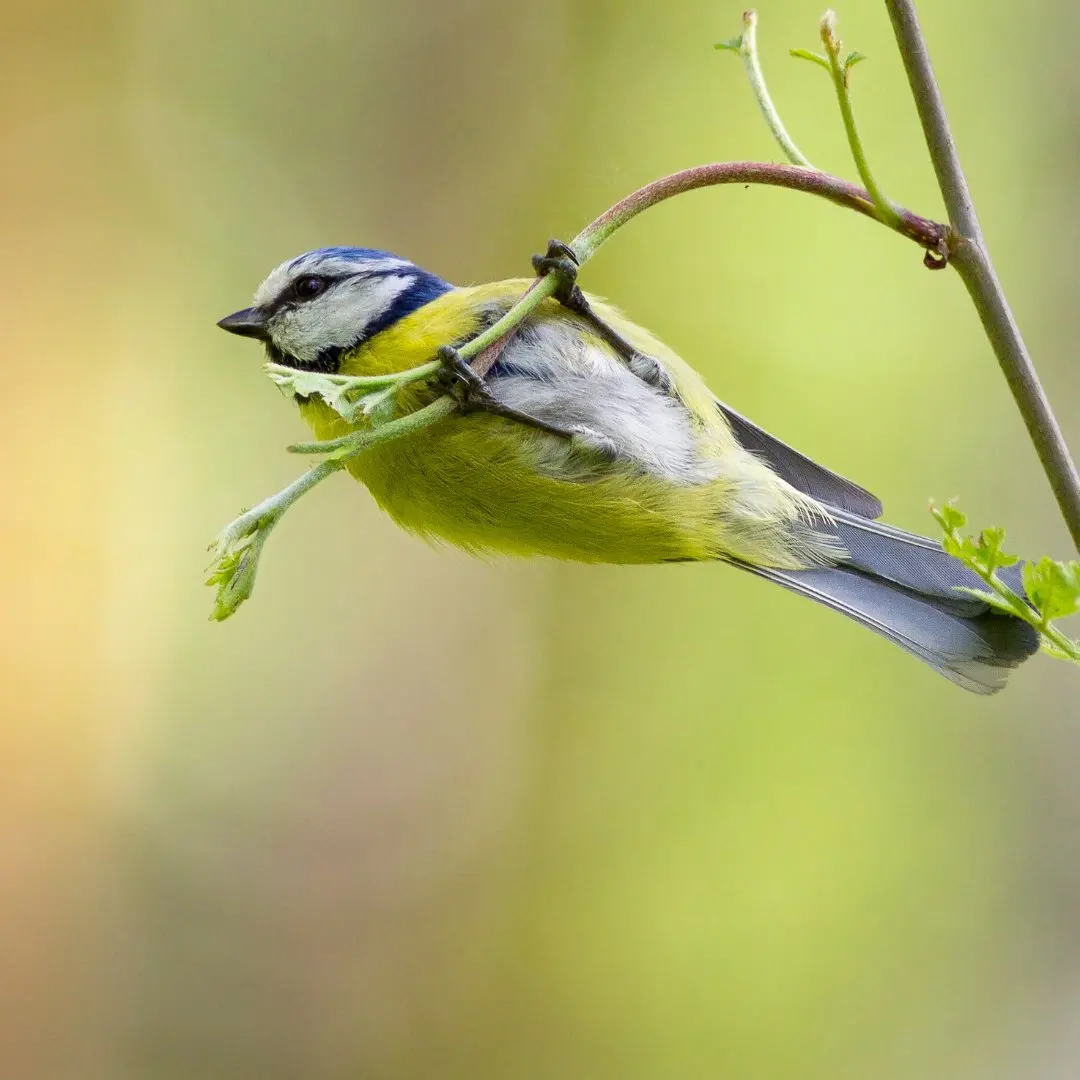
Vocalization and song patterns
The song of the Eurasian Blue Tit is unique, albeit not very melodious. This bird often sings from high perches in trees, usually hidden from view, producing sharp, repetitive sounds. A typical song begins with one to three high notes, followed by a rapid, liquid trill that sounds like "tsui tssuissuissuissuissuissui". This trill is a prolonged, rapid alternation of two notes, a vocal style called “trillo,” derived from the Italian word for “tremble.”
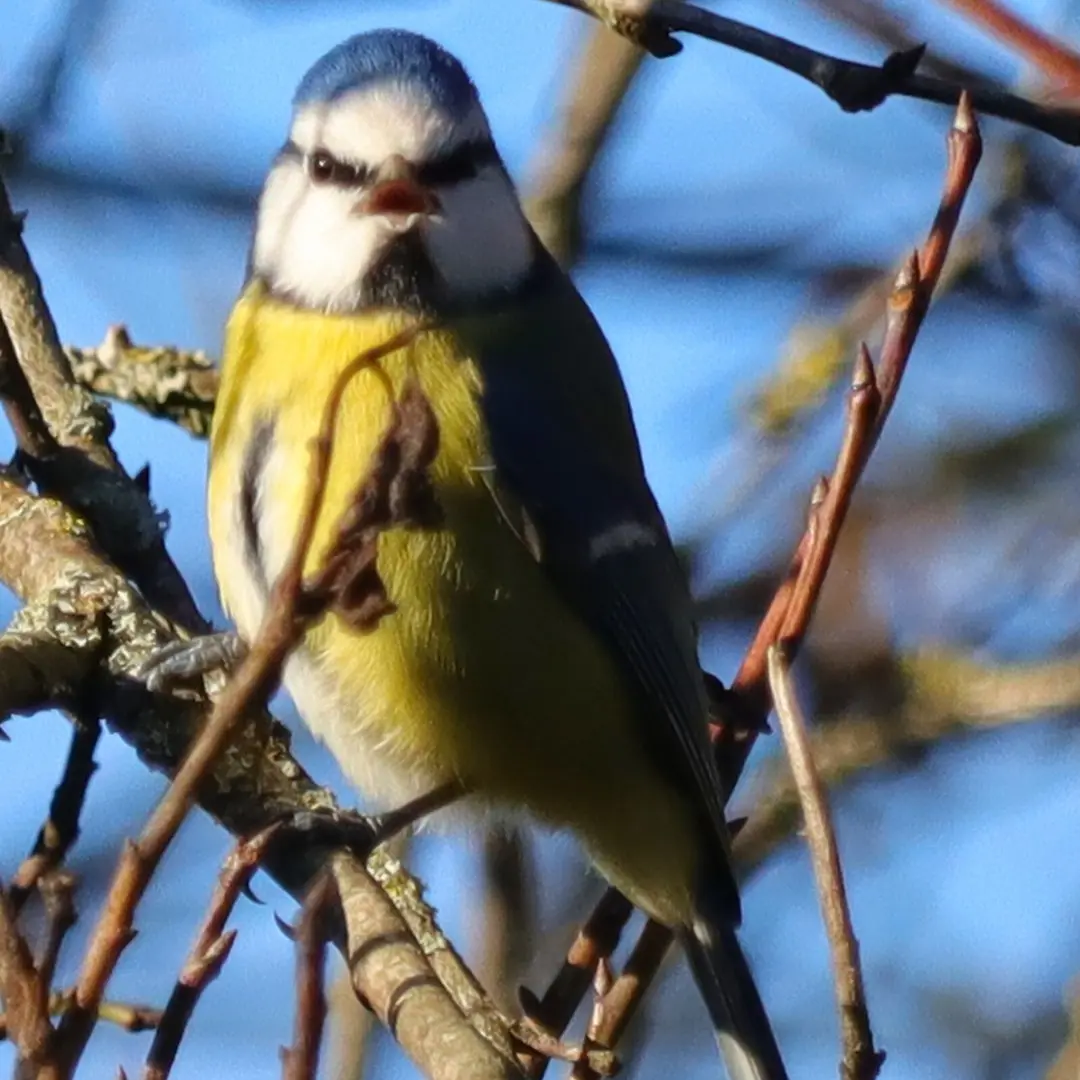
Breeding season and nesting habits
The Eurasian Blue Tit’s breeding season spans from March to August. During this period, it builds nests exclusively for laying eggs and raising young. These nests are made from twigs and moss, forming a small cup, sometimes with aromatic herbs like lavender or mint to help prevent bacterial or fungal growth. Each year, the female may lay 1 to 2 clutches of 6-15 eggs, which are white with reddish-brown speckles.
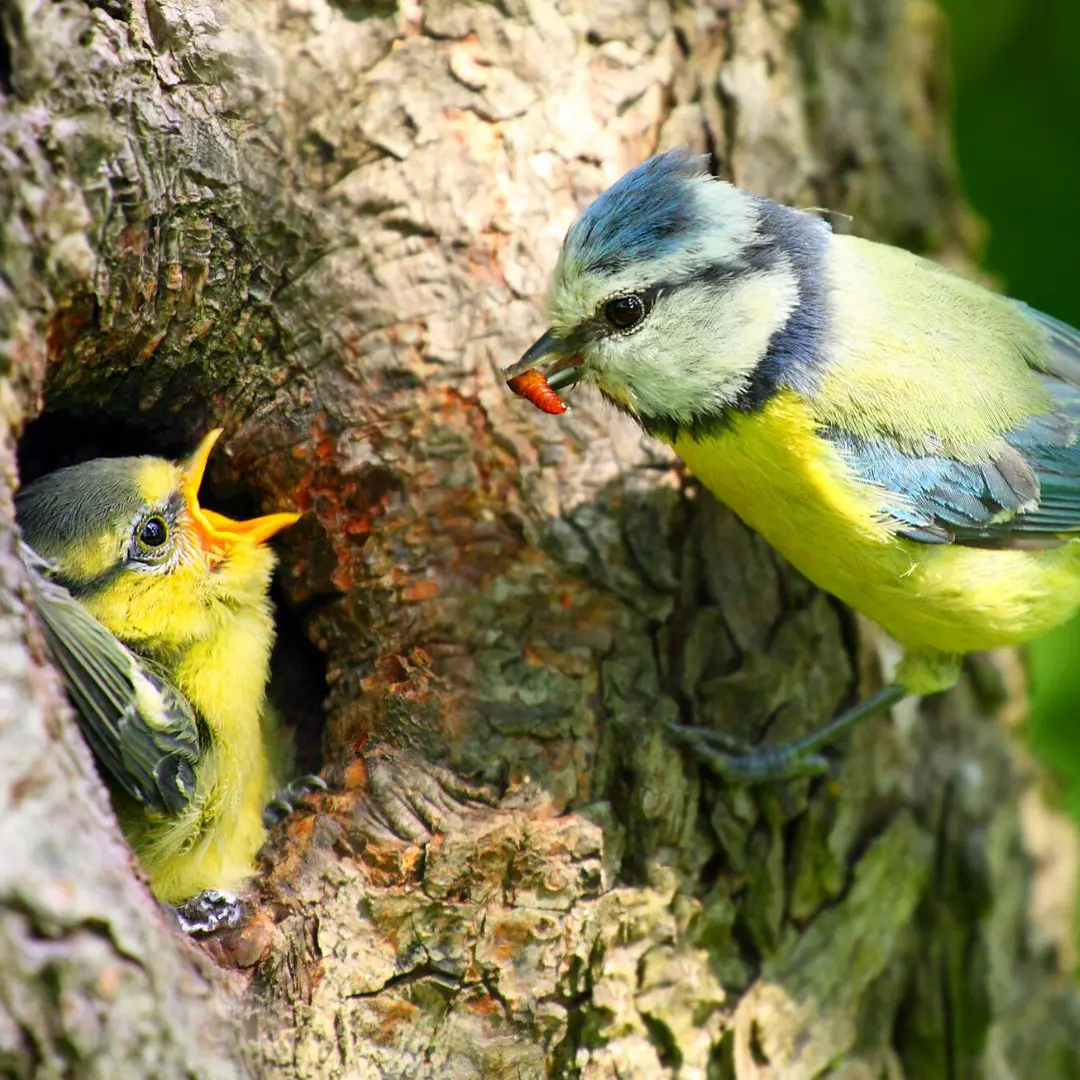
Seasonal diet and feeding behavior
The Eurasian Blue Tit’s diet varies by season. During the breeding season, from spring to autumn, it consumes primarily insects and larvae found on trees and shrubs. As winter approaches, these birds shift to a diet of seeds. For additional nutrition, one can place fat balls outdoors during the cold season. The Blue Tit’s short and powerful beak enables it to crack open seeds and feed effectively. It can be quite aggressive at feeders, often puffing up its cap to intimidate other birds, including larger species like the Great Tit.

Natural habitat and migratory patterns
The Eurasian Blue Tit can be either sedentary or migratory, depending on environmental factors. It is found year-round in most regions, especially in deciduous woodlands like oak, beech, and birch forests. This species also thrives in mixed forests, parks, and gardens, with a preference for oak forests. During colder seasons, some Blue Tits may migrate short distances to find milder climates or to reduce competition for food. These birds are cavity nesters, choosing small natural cavities or even man-made nest boxes with entrance holes of 26-27 mm to keep out larger competitors like the Great Tit.
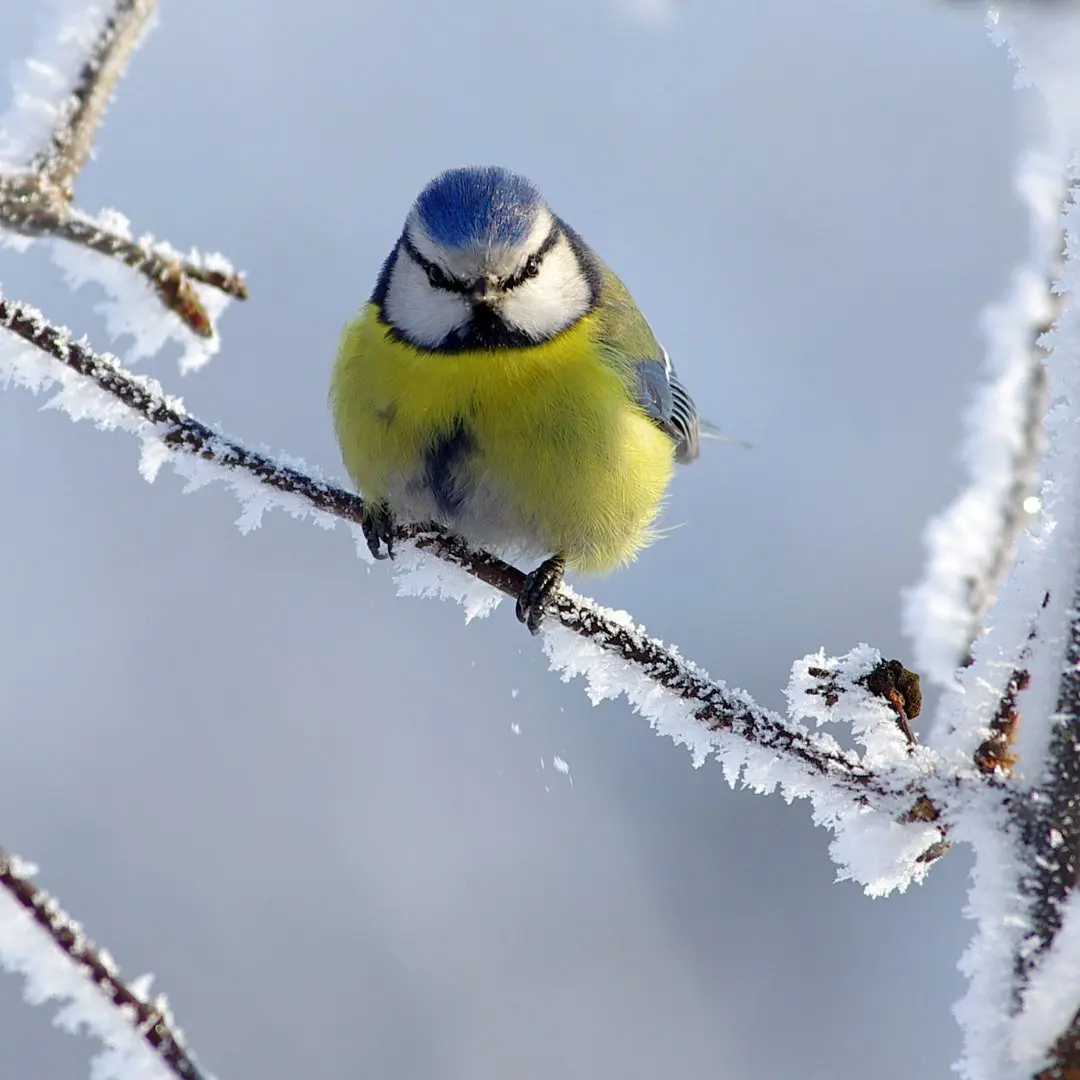
The Eurasian Blue Tit is widely distributed across Europe but is absent from the extreme north, such as northern Scandinavia and Iceland.
-


